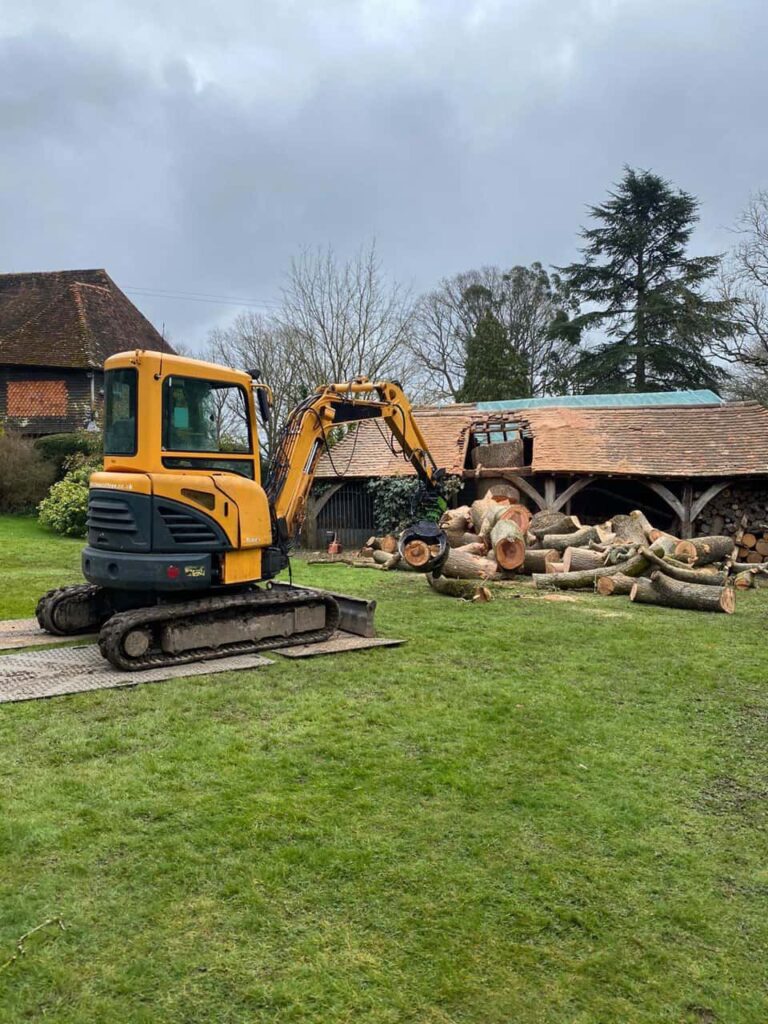The Art of Creating Bonsai Trees through Reshaping
Introduction: Bonsai trees are captivating living sculptures that embody nature’s beauty in miniature form. These miniature trees have been meticulously shaped and pruned to achieve an artful balance between aesthetics and nature’s intrinsic beauty. In this blog post, Thrapston Tree Surgeons will delve into the fascinating world of bonsai trees, exploring the art of creating bonsai through reshaping techniques.
The Bonsai Tradition
Originating in China over a thousand years ago, the Japanese later embraced and refined bonsai cultivation. “bonsai” means “planted in a container” in Japanese. Bonsai trees are grown in small pots and are meticulously pruned, trained, and reshaped to capture the essence of mature trees in a compact size.
The Artistic Process
Creating bonsai is a blend of horticultural expertise and artistic expression. Here’s how it’s done:
- Tree Selection: The first step is to choose a suitable tree species for bonsai cultivation. Common choices include junipers, pines, maples, and ficus.
- Pruning: Pruning is a fundamental technique in bonsai cultivation. It involves trimming branches, leaves, and roots to create the desired shape and size. This process encourages compact growth and a harmonious balance between branches.
- Wiring: Copper or aluminium wires gently wrap around branches to guide their growth and create elegant bends and curves. This allows the artist to control the tree’s form and movement.
- Pot Selection: The choice of pot is critical. Bonsai pots come in various shapes, sizes, and materials, and the selection should complement the tree’s style and character.
- Soil and Repotting: Bonsai trees require well-draining soil to thrive. They are periodically repotted to refresh the soil and encourage healthy growth.
- Styling: Bonsai styling is an ongoing process that can take years or even decades. The artist shapes the tree to mimic its mature counterpart, striving for a balanced and harmonious appearance.
Reshaping Techniques
Reshaping is at the heart of bonsai artistry. Here are some common reshaping techniques used in bonsai cultivation:
- Pruning: Regular pruning maintains the desired size and shape of the bonsai. It removes excess growth and encourages branching.
- Wiring: Copper or aluminium wires guide the growth of branches and trunks. The artist can achieve graceful curves and angles by applying tension in specific directions.
- Shaping: Styling tools like concave cutters, knob cutters, and branch benders are used to shape branches, remove unwanted growth, and create intricate details.
- Defoliation: Temporarily removing leaves can stimulate new growth, reduce leaf size, and create a more delicate appearance.
- Deadwood Techniques: Jin and Shari were involved in creating deadwood features on the trunk and branches, adding character and age to the bonsai.
Conclusion: Creating bonsai trees through reshaping is a captivating blend of art and horticulture. Bonsai artists, known as “bonsai masters,” invest years honing their skills to craft living masterpieces that capture the essence of nature in miniature form. Whether you’re a seasoned bonsai enthusiast or a beginner, the art of bonsai offers a profound appreciation for the beauty and resilience of trees.
Call us on: 01832 770 681
Click here to find out more about Thrapston Tree Surgeons
Click here to complete our contact form and see how we can help with your tree’s needs.

